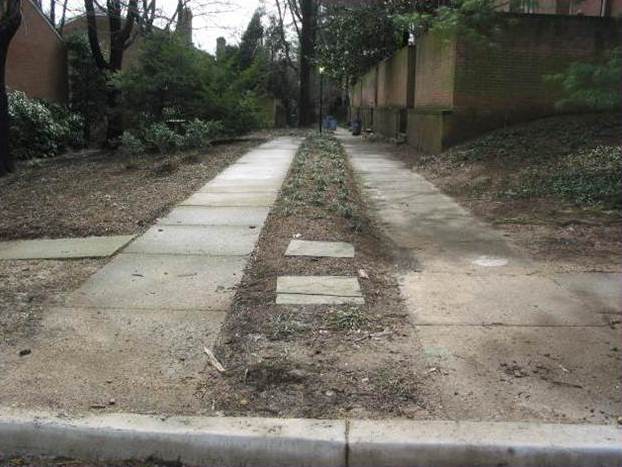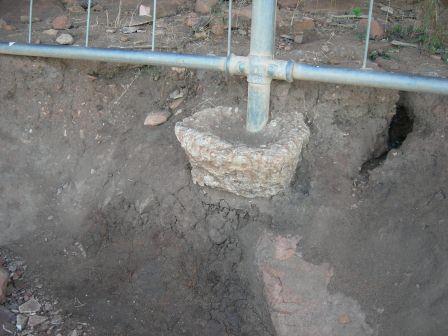The solutions on this page address two scenarios: what to do if you find sediment on driveways, sidewalks or other flat areas; and how to deal with an obstruction in the path of natural stormwater flow.
Sediment on Driveways and Sidewalks After Storms
 A sediment coating on driveways, sidewalks and other paved or flat surfaces indicates that erosion is occurring somewhere nearby. If the source of erosion is not immediately obvious, observe your property next time it rains. Where does the water flow? Where is the sediment-laden water coming from? You also may find that runoff is carrying water and sediment offsite. It is least expensive and most effective to solve the problem as close to the source as possible.
A sediment coating on driveways, sidewalks and other paved or flat surfaces indicates that erosion is occurring somewhere nearby. If the source of erosion is not immediately obvious, observe your property next time it rains. Where does the water flow? Where is the sediment-laden water coming from? You also may find that runoff is carrying water and sediment offsite. It is least expensive and most effective to solve the problem as close to the source as possible.
If the erosion is occurring on your property, identify the source and return to Yard Erosion to find your solution.
If the source of the sediment is on a neighboring property, talk with your neighbor to see if you can work together to address the problem. If your neighbor is not receptive, a good option is to slow down and intercept the runoff using a compost blanket.
Scouring Around an Obstruction
 Large rocks, logs or other objects can obstruct the natural path of stormwater flow. This generates high velocities and scouring around the edges of the obstruction. The best solution is to remove the obstructions.
Large rocks, logs or other objects can obstruct the natural path of stormwater flow. This generates high velocities and scouring around the edges of the obstruction. The best solution is to remove the obstructions.
1. Remove or Cut the Obstruction from the Path of Flow
The best solution for this erosion problem is to remove the obstruction from the path of flow. Sometimes this is an easy fix and other times it can be a costly endeavor, depending on the object.
If a hole or gully has developed from deep scouring, incrementally fill in the depression with fill soil with high clay content and low amount of sand. Do not use gravel or rock as a fill material.
- Shovel a few inches of the fill soil into the bottom of the depression and compact it thoroughly with a soil tamper or the back of a shovel.
- If needed, continue this process until the depression is flush with the ground.
- The fill soil will compact and settle over time. To prevent a hole from forming again, overfill the hole to create a small dome.
- You may want to lay down a few inches of un-compacted top soil or potting soil on top of the filled hole. Fill soil is generally low in fertility. A thin layer of topsoil or potting soil will help in establishing a new seed bed.
- Cover the spot with your choice of landscaping.
2. Reinforce the Obstruction to Prevent Erosion.
The best option is to remove obstructions to allow for natural stormwater flow. If you are unable to remove the obstruction, there may be cases where other protective options may be considered. For example, if you have a fence that is serving a useful purpose, you may decide to reinforce it with riprap or stone to prevent erosion.

